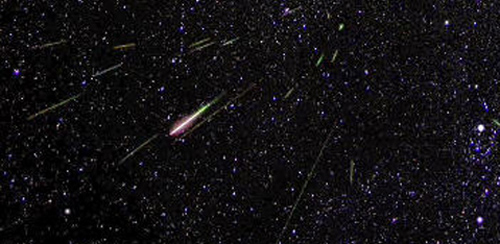 Many thanks to SWLing Post contributor, Dennis Dura, for sharing the following article from Hackaday: Radio Apocalypse: Meteor Burst Communications
Many thanks to SWLing Post contributor, Dennis Dura, for sharing the following article from Hackaday: Radio Apocalypse: Meteor Burst Communications
This piece explores Meteor Burst Communications (MBC)—a method of bouncing radio signals off ionized meteor trails to enable long-distance communication without relying on satellites or infrastructure. Used historically in military systems, MBC remains a compelling option for resilient, beyond-line-of-sight communication—even in grid-down scenarios.

Here in Europe we used meteor scatter to work a lot of 144MHz DX. Skeds were arranged on the 20m VHF net and usually arranged for the best times during major showers (Perseids, Quadrantids,…)
Pre-computer days (1980) we used modified memory keyers to send high-speed morse up around 600 lpm (letters per minute) for 5-minute TX periods. Then listen for 5 minutes. The receive side required a modified cassette tape recorder to slow down any received pings/bursts.
Those who didn’t have a code licence did this using SSB (for 1 minute periods), considerably more difficult but just as much fun.
A Washington State-based company specialized in meteor-burst comms. They’re still around but now involved in railroad communications: https://meteorcomm.com/history/
The article begins, “The world’s militaries have always been at the forefront of communications technology.” Yes. Recall the words of General (and Radio Amateur) Curits LeMay: “The president can make you a general, but only communications can make you a commander.” (From The Secret Parts of Fortune: Three Decades of Intense Investigations and Edgy Enthusiasms by Ron Rosenbaum; Chapter: The Subterranean World of the Bomb)
When Marconi wanted to commercialise his invention he went to Britain to sell it to the Royal Navy.
I did meteor burst work back in the days of “iron men and wooden radios.” 🙂 No digital, mostly SSB, although some used high speed Morse. It’s a fascinating mode! Contacts were usually scheduled using telephone, email, or an 80 meter coordinating frequency. One year I attended the Central States VHF Society annual meeting and arranged several schedules while there. It could take 15 to 30 minutes to complete a contact, sometimes getting only a fraction of a word during an over. Sometimes a “blue whizzer” would come along and you could make a complete exchange on a single “rock.” Hard work, but fun!
One phenomenon that I’ll never forget — if you’re familiar with someone’s voice (say, from a telephone call) discovering that you can recognize their voice from hearing only a fraction of a syllable during a burst.
Ping Jockeys rule!